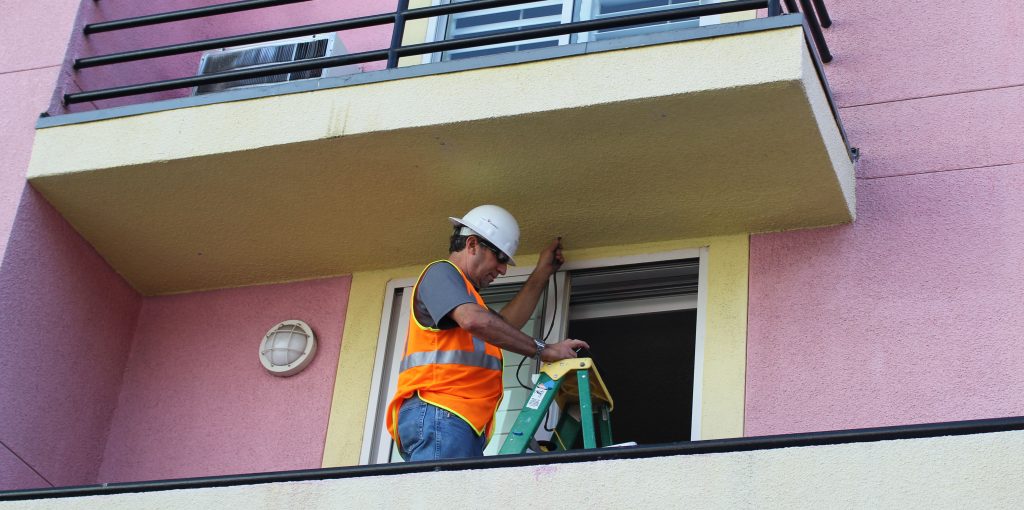Challenges Faced by Rental Housing Providers Under California Balcony Bill

UPDATE: The inspection deadline for California SB 721 was extended one year to January 1, 2026. This extension was made by Assembly Bill 2579, which was signed by California's Governor on September 28, 2024.
California Senate Bill 721 (SB 721), known as the "deck and balcony inspection" bill, has significantly impacted rental housing providers since its implementation on January 1, 2019. While the law was enacted with the intention of preventing tragic incidents like balcony collapses by mandating regular inspections of exterior elevated elements (EEEs) in multi-family residential buildings, it has also introduced several challenges for rental owners and property managers. These challenges range from financial burdens to logistical complexities, all of which can have far-reaching implications for the rental housing market.
Financial Strain on Property Owners
One of the most significant challenges posed by SB 721 is the financial burden it places on property owners. The law requires inspections to be carried out by licensed professionals, such as architects, civil or structural engineers, or certified building inspectors. These professionals typically charge substantial fees for their services, especially when inspections involve extensive testing and detailed reports. For small-scale rental owners with older properties, the costs can be particularly daunting.
The financial strain does not end with the inspection itself. If defects or safety issues are identified, property owners must complete repairs or replacements within 120 days. Depending on the severity of the issues, these repairs can be costly, particularly when dealing with structural elements like balconies, decks, or stairways. In many cases, owners are faced with unplanned expenses that can disrupt their cash flow and, in some instances, require them to take out loans or dip into reserves.
Additionally, the requirement to repeat inspections every six years further adds to the long-term financial burden. With each cycle, property owners must allocate funds not only for the inspections but also for any necessary repairs that may arise. The cumulative cost over time can be significant, particularly for those managing multiple properties.
Logistical and Operational Challenges
Beyond the financial implications, SB 721 presents several logistical challenges for rental housing providers. Coordinating inspections in multi-family residential buildings can be complex, especially in larger properties with numerous EEEs. The law mandates that a minimum of 15% of each type of EEE be inspected during each cycle, which requires careful planning and scheduling to ensure that all necessary elements are covered.
For property managers, this means juggling multiple responsibilities, including notifying renters, coordinating access to the units, and ensuring that the inspections are carried out in a timely manner. The process can be particularly disruptive for renters, who may need to temporarily vacate their units during inspections or repairs. Managing renters relations during this time is an additional challenge, as disruptions can lead to dissatisfaction and potential turnover.
Furthermore, the requirement to retain inspection reports for 12 years adds to the administrative burden on property owners and managers. These reports must be meticulously organized and readily available for review by jurisdictional officials upon request. Failure to comply with record-keeping requirements can result in penalties, adding another layer of complexity to property management operations.
Impact on Rental Market and Housing Affordability
The financial and logistical challenges associated with SB 721 can also have broader implications for the rental market and housing affordability in California. As property owners face increasing costs due to inspections, repairs, and potential penalties, many may be compelled to pass these expenses on to renters in the form of higher rents. This, in turn, exacerbates the already pressing issue of housing affordability in the state, particularly in high-demand areas where rental prices are already steep.
Smaller "mom & pop" owners, who often operate on tighter margins, may find it particularly difficult to absorb the costs associated with SB 721. In some cases, they may choose to sell their properties rather than contend with the ongoing financial and operational challenges. This could lead to a consolidation of rental properties in the hands of larger, corporate landlords, which can further drive up rental prices and reduce the availability of affordable housing options.
Moreover, the potential for fines of up to $500 per day for non-compliance with SB 721 can be a significant deterrent for owners who are already struggling to meet the law’s requirements. The fear of incurring such penalties may push some property owners to take drastic measures, such as reducing maintenance or even opting to remove units from the rental market altogether. This could result in a decrease in the overall housing supply, further intensifying the state’s housing crisis.
The Need for Support and Solutions
Given the challenges posed by SB 721, there is a growing need for support and solutions to help rental housing providers comply with the law without compromising the viability of their businesses. Potential solutions could include financial assistance programs, such as low-interest loans or grants, to help cover the costs of inspections and repairs. Additionally, providing owners with resources and guidance on navigating the inspection process could help mitigate some of the logistical challenges.
Another potential solution could involve revisiting certain aspects of the law to strike a balance between safety and feasibility. For example, extending the timeline for repairs or reducing the frequency of inspections could alleviate some of the financial and operational pressures on property owners.
While California Senate Bill 721 was enacted with the important goal of ensuring the safety of multi-family residential buildings, it has also introduced significant challenges for rental housing providers. The financial, logistical, and operational burdens associated with the law have far-reaching implications, not only for property owners but also for renters and the broader rental market. As California continues to grapple with its housing crisis, it is crucial to find solutions that address these challenges while maintaining the safety and integrity of the state’s housing stock.


